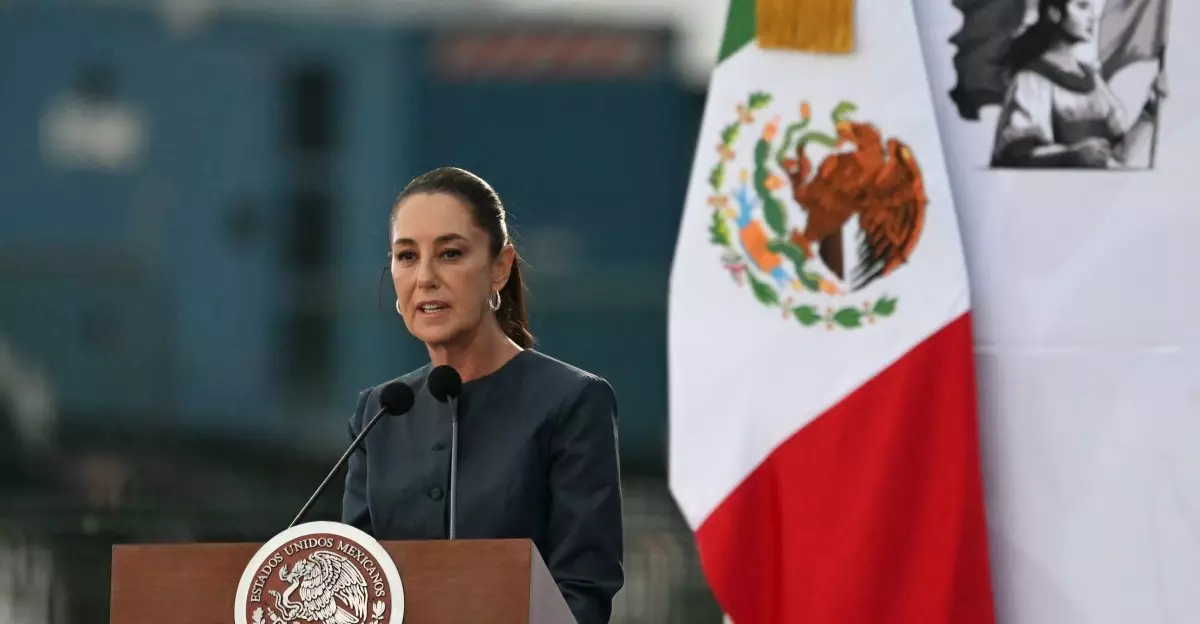The geopolitical landscape often shapes itself through symbols, and names are perhaps the most potent symbols of identity and territorial claims. The recent decision by Mexican President Claudia Sheinbaum to sue Google over the rebranding of the Gulf of Mexico to the “Gulf of America” showcases a critical intersection of technology, national sovereignty, and cultural recognition. Sheinbaum’s legal maneuver isn’t merely a political stunt; it marks a significant assertion of Mexico’s claim to its geographic identity against perceived American overreach.
In the age of digital maps, where geographic naming conventions affect cultural perceptions, Sheinbaum’s stance against Google’s alteration reflects a broader fight for national identity. In her assertion, she emphasizes that the decree by the U.S. government cannot dictate names across shared territories, invoking the idea that names should reflect a collective history and respect for borders. This legal fight encapsulates the complexities of international relations in an increasingly interconnected digital age.
The Dynamics of Name Changing
Names are powerful. They carry weight and often evoke emotional connections to place, identity, and nationality. By labeling the Gulf of Mexico as the “Gulf of America,” Google and the Trump administration may inadvertently be undermining Mexico’s cultural and historical ties to this body of water. President Sheinbaum articulated this sentiment poignantly: “the part that corresponds to Mexico can’t be renamed.” Herein lies the crux of the dispute—who gets to control the narrative around geographic identity?
It was not merely a name change but a political maneuver which resonates with the rhetoric of nationalism that has characterized Trump’s presidency. By insisting on a rebranding, the former president aimed at reaffirming America’s dominance on the global stage. Conversely, Sheinbaum’s legal action attempts to leverage international law to push back against unilateral American decisions that disregard Mexican sovereignty and cultural heritage.
Corporate Compliance with Political Directives
Google’s compliance with the Trump administration’s wishes raises questions about corporate responsibility, particularly concerning their role in shaping public perceptions of geographic and cultural identity. The decision to revise the name in its maps has drawn criticism not only from the Mexican government but also from individuals who see this action as a capitulation to political pressure.
Instances such as these highlight an uncomfortable truth about technology firms—their immense influence on cultural narratives can lead to unintentional validation of controversial political agendas. The situation is compounded further by the fact that while Google’s mapping service altered the name for users outside Mexico, it preserved the original “Gulf of Mexico” designation for users within the country, reflecting a kind of digital territorialism.
A Broader Context of U.S.-Mexico Relations
Suing a tech behemoth like Google would send ripples beyond the immediate issue of the Gulf’s name. This legal dispute could encapsulate the broader tensions that characterize U.S.-Mexico relations—historical conflicts, trade agreements, immigration policies, and cultural exchanges. Each aspect interplays with the other, demonstrating that the politics of naming extends into practically every facet of interaction between these two nations.
Sheinbaum’s move shows significant political acumen; it signals that the Mexican government will not shy away from asserting its rights. Moreover, this case might encourage other nations to challenge similar name changes driven by political ideologies rather than geographical or cultural realities. Additionally, it highlights the critical responsibilities of technology firms in understanding the implications of their decisions on international identities.
The Ripple Effect of Geographic Nomenclature
As nations continue to grapple with identity in a globalized world, the politics surrounding geographic nomenclature will likely intensify. Sheinbaum’s lawsuit not only addresses immediate grievances but also establishes a crucial precedent for how countries can respond to perceived injustices enacted by larger powers. The fallout may lead to a deeper probing of how digital platforms interact with and impact cultural narratives, shaping perceptions in ways that transcend borders.
In the end, this conflict over naming rights serves as a reminder that geographic identities are not mere labels but reflections of complex histories, cultures, and shared histories that demand respect and recognition. The outcome of this case is bound to reverberate long after the legal arguments are settled; it will signal how nations communicate their identities in an era increasingly defined by digital constructs.

